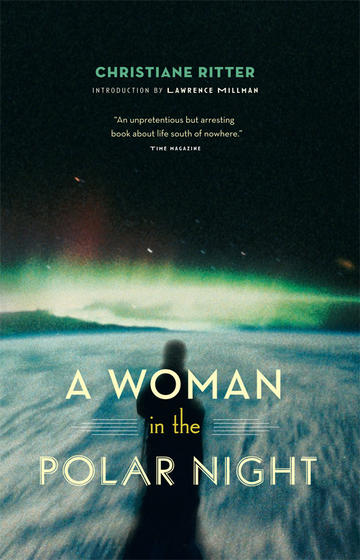About BC Books Online
BC Books Online was created for anyone interested in BC-published books, and with librarians especially in mind. We'd like to make it easy for library staff to learn about books from BC publishers - both new releases and backlist titles - so you can inform your patrons and keep your collections up to date.
Our site features print books and ebooks - both new releases and backlist titles - all of which are available to order through regular trade channels. Browse our subject categories to find books of interest or create and export lists by category to cross-reference with your library's current collection.
A quick tip: When reviewing the "Browse by Category" listings, please note that these are based on standardized BISAC Subject Codes supplied by the books' publishers. You will find additional selections, grouped by theme or region, in our "BC Reading Lists."
"
In this extraordinary adventure, a reluctant visitor to the Arctic thrives in the awesome and unforgiving landscape.
In 1933, Christiane Ritter, a painter from Austria, travelled to Spitsbergen, an Arctic island north of Norway, to be with her husband. He had been taking part in a scientific expedition and stayed on to hunt and fish. ""Leave everything as it is and follow me to the Arctic,"" he wrote to his wife; but for Christiane, ""as for all central Europeans, the Arctic was just another word for freezing and forsaken solitude. I did not follow at once."" Eventually she gave in, lured by his compelling stories about the remarkable wildlife and alluring light shows. She says: ""They told of journeys by water and over ice, of the animals and the fascination of the wilderness, of the strange light over the landscape, of the strange illumination of one's own self in the remoteness of the polar night. In his descriptions there was practically never any mention of cold or darkness, of storms or hardships.""
The story that follows is compelling, and the writing is both matter-of-fact and magical -- much like the environment in which they live. Ritter, both wise and naive, courageous and with a touch of wry humour, reveals a depth of insight and self-knowledge that the stark setting enhances. In moving and rich detail, she describes her life in the bleak tarpaulin-covered hut, 60 miles from the nearest neighbour and more than 150 miles from the closest settlement. She writes matter-of-factly about the isolation, cold, and the overwhelming beauty, as well as day-to-day survival -- hunting, trapping, cooking, and not freezing to death. In the summer it was light for twenty-four hours a day, and for five months in the winter the sun never appeared. At times the moonlight was so intense her husband forced her to stay in the hut so she would not get moonstruck.
Ritter records the changing seasons, the animal and bird life, the treks over the fjords, the arrival of the ice pack, and the shooting of the first bear. And she expresses an awareness of the sanctity of the environment, the preciousness of nature, and the place that the natural world holds in the human psyche.
Finally, and believably, the story comes full circle. Ritter had been frightened and forlorn at her first sighting of their remote hut at Gray Hook, her home for the next year. And, twelve months later, on her last day in the Arctic, she feels a deep sadness as their boat pulls away.
"



